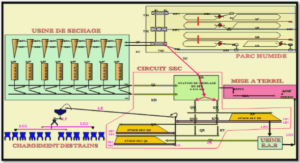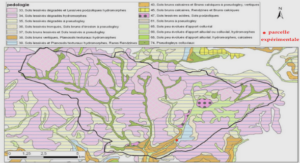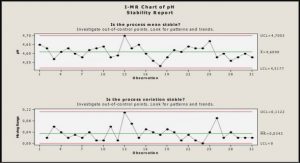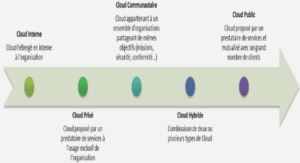Biomécanique de la propulsion en fauteuil roulant
ARTICLE 1 : AN ORIENTATION ESTIMATOR FOR THE MANUAL WHEELCHAIR’S CASTER WHEELS
Pour tenir compte de la propulsion sur des parcours curvilinéaires, et non seulement sur des lignes droites, le modèle du système fauteuil-utilisateur doit inclure l’accélération angulaire en plus de l’accélération linéaire. C’est le cas de plusieurs modèles dynamiques déjà existant (Wang et al., 2009; Shung et al., 1983; Miyata et al., 2008; De La Cruz et al., 2010; Coelho et Nunes, 2005). Or, ces modèles considèrent l’influence des roues avant sur la dynamique du fauteuil comme une perturbation extérieure, et non comme une partie intégrante du modèle. Comme les roues avant ont une contribution importante sur le comportement du fauteuil roulant (Ding et al., 2004; Gentile et al., 1996), elles doivent être inclues dans le modèle.
Johnson et Aylor (1985) ont proposé un modèle du fauteuil roulant qui inclut la dynamique des roues avant, mais cette dynamique est dépendante de plusieurs paramètres difficiles à mesurer, comme le moment d’inertie des roues avant, les coefficients de friction en roulement et en glissement des roues avant, ainsi que le coefficient de moment vertical de friction des roues avant. De plus, les paramètres de friction changent d’un type de sol à l’autre. La première contribution de ce doctorat consiste en un modèle cinématique du système fauteuilutilisateur, qui permet d’estimer l’orientation des roues avant en fonction des vitesses des roues arrière. Cet estimateur est seulement dépendant de paramètres géométriques du fauteuil, et non de paramètres de friction ou d’inertie. Il fonctionne donc pour n’importe quel type de sol. Ce modèle cinématique a été présenté en premier lieu au 4ème congrès “Rehabilitation : Mobility, Exercise and Sports” (RehabMove 2009, Amsterdam) (Chénier et al., 2009), puis il a été publié dans la revue IEEE Transactions on Control Systems Technology (Chénier et al., 2011a). Cet article forme le présent chapitre.
Abstract
Wheelchair ergometers are a highly valuable tool in the study of the biomechanics of manual wheelchair propulsion. However, current ergometers have some drawbacks that affect their level of realism. For example, the moment of inertia of the wheelchair-user system and the caster wheels’ orientation are usually neglected, despite their high influence on the wheelchair’s behavior. Taking these factors into account requires a complex dynamic model, and the calibration of such a model requires on-the-field recordings of the caster wheels’ orientation, which are currently difficult to obtain. In this paper, we have proposed an open-loop observer that estimates each caster wheel’s orientation (CWO) based only on the rear wheels’ kinematics. The model was validated by propelling the wheelchair on three different floors (vinyl, carpet, and concrete) with five different normal forces between the caster wheels and the ground. Comparison between the estimated CWO and a reference one recorded by an optoelectronic device gave an accuracy error of less than ±8○. This error reduced to ±5○ when the wheelchair was propelled following straight or slightly curved patterns. This observer has implications in the design of better wheelchair ergometers and simulators, as well as in the control of electric wheelchairs.
Introduction
Research in the design of manual wheelchairs has been growing actively since the last decade, which brings an extensive use of stationary ergometers. These ergometers aim to reproduce the dynamic behavior of a manual wheelchair and to record the biomechanical data representing real-life propulsion. As a matter of fact, fixing a wheelchair on a treadmill should represent highly realistic propulsion conditions (Martin et al., 2002). However, the user cannot control his speed or change direction. Moreover, the strong effect of the floor material on the rolling resistance (Chesney et Axelson, 1996; Koontz et al., 2005; Hoffman et al., 2003) cannot be replicated because the wheels are always on the same surface.
To overcome these limitations of fixed speed, direction, and kind of floor, a common solution is to place the rear wheels of the wheelchair on two separate rollers. Similarly, a complete system including the chair and both the wheels can be used. These ergometers are then tuned to approach the dynamic behavior given by Eq. (3.1) (Niesing et al., 1990). where m is the total mass of the wheelchair-user system, v is the linear velocity, ∑Fapp is the sum of the applied forces on the wheels by the user, Fair(v2) is the air drag force, Froll(v) is the rolling resistance force caused by the deformation of the wheels on the ground, g is the gravitational acceleration, and β is the slope angle. Current ergometers generally distribute the inertial and resistive components of Eq. (3.1) equally on both the rear wheels, as given by Eq.
i is the angular velocity of wheel i, Fappi is the tangential force applied on this wheel, and rR is the radius of the wheels. Some ergometers approach this behavior by linking each wheel to a flywheel and a brake (Langbein et al., 1993; Devillard et al., 2001; Faupin et al., 2008; Yao, 2007), while others make use of motors (Niesing et al., 1990; Shimada et al., 1995; Yamada et Muto, 2004) or a combination of flywheels, brakes, and motors (Harrison et al., 2004). The dynamic model expressed by Eq. (3.1) has two important advantages: first, it can be implemented with mechanical parts only. Second, it is relatively easy to calibrate the inertia and resistance of the wheels using the coast-down protocol (DiGiovine et al., 1997). However, it neglects some important aspects of the real wheelchair-user dynamics. First, it is valid for straight-line direction only, i.e. when turning, the axial moment of inertia of the wheelchair-user system is totally neglected. Second, the effect of each caster wheel’s orienta- tion (CWO) on the wheelchair motion is not taken into account, despite its important impact on the wheelchair’s trajectory (Ding et al., 2004). As both CWOs always change when executing turning maneuvers, we can conclude that no ergometer can adequately reproduce the dynamics of the wheelchair when the user is not wheeling strictly in a forward direction. An ergometer aiming to reproduce the wheelchair propelled in a curvilinear direction must
dynamically change the resistance felt by the user. For example, this resistance should be greater when the wheelchair’s trajectory is not in line with the CWO. A motorized computercontrolled ergometer could achieve this task, provided that an adequate wheelchair dynamic model is used. Johnson et Aylor (1985) developed such a theoretical model that adds three dynamic equations to Eq. (3.1); however, as many as six new parameters are required to express the dynamics of the CWO, such as the individual moment of inertia of each caster wheel, along with the sliding and rotating friction coefficients between the caster wheels and the ground. These parameters are difficult to measure experimentally and change for each ground surface, which prevent the direct application of this model to actual motorized ergometers. On the other hand, even if their model was simplified, it would still require real CWO recordings or estimations, in order to be fitted on real data (Khalil et Dombre, 1999). The CWOs were measured only in a few studies, with the help of a dedicated caster wheel instrument (VanSickle et al., 1997). No study known by the authors has focused on the estimation of these orientations without the use of cumbersome additional instrumentation.
In this paper, we have first expressed the dynamic behavior of the CWOs based only on the linear and angular speed of the wheelchair. No information on the floor surface or the inertial characteristics of the caster wheels is required. Subsequently, the stability of our model is developped to be used as a CWO estimator based on the recordings of the angular position of both the rear wheels. This information is readily available from instrumented wheels, such as SmartWheels (Asato et al., 1993). Finally, the CWO is experimentally measured and estimated on multiple surfaces and with multiple normal forces between the ground, and the accuracy of the estimator is discussed based on the results from these experiments
|
Table des matières
INTRODUCTION
CHAPITRE 1 REVUE DE LITTÉRATURE
1.1 Biomécanique de la propulsion en fauteuil roulant
1.1.1 Efficacité mécanique de la propulsion
1.1.2 Mesure de la MEF
1.1.3 Conflit entre l’efficacité mécanique et la charge à l’épaule
1.2 Biofeedback
1.2.1 Biofeedback sur la propulsion en fauteuil roulant
1.2.2 Biofeedback haptique
1.3 Revue des ergomètres de fauteuil roulant
1.3.1 Ergomètre mobile
1.3.2 Ergomètre à tapis roulant
1.3.3 Ergomètre à rouleaux
1.3.4 Ergomètre intégré
1.3.5 Conclusion
CHAPITRE 2 MÉTHODOLOGIE
2.1 Plateforme originale
2.2 Principales étapes de réalisation
CHAPITRE 3 ARTICLE 1 : AN ORIENTATION ESTIMATOR FOR THE MANUAL WHEELCHAIR’S CASTER WHEELS
3.1 Abstract
3.2 Introduction
3.3 Mathematical model
3.4 Stability of the estimator
3.5 Experimental validation
3.5.1 Test conditions
3.5.2 Instrumentation
3.5.3 Data processing
3.6 Results
3.7 Discussion
3.8 Conclusion
3.9 Appendix
CHAPITRE 4 ARTICLE 2 : A NEW DYNAMIC MODEL OF THE WHEELCHAIR PROPULSION ON STRAIGHT AND CURVILINEAR PATTERNS
4.1 Abstract
4.2 Introduction
4.3 Dynamic models
4.3.1 WSL model
4.3.2 WSC model
4.3.2.1 Dynamic constraints
4.3.2.2 Kinematic constraints
4.4 Parameter identification
4.4.1 WSL model
4.4.2 WSC model
4.4.3 State estimation
4.5 Experimental method
4.5.1 Parameter identification
4.5.1.1 WSL model
4.5.1.2 WSC model
4.5.2 Velocity estimation
4.5.3 Sensitivity analysis
4.6 Results
4.6.1 Parameter identification
4.6.2 Velocity estimation
4.6.3 Sensitivity analysis
4.7 Discussion
4.7.1 Parameter identification
4.7.2 Velocity estimation
4.7.3 Sensitivity analysis
4.8 Conclusion
CHAPITRE 5 ARTICLE 3 : A NEW WHEELCHAIR ERGOMETER DESIGNED AS AN ADMITTANCE-CONTROLLED HAPTIC ROBOT
5.1 Abstract
5.2 Introduction
5.3 Description of the prototype
5.3.1 Overview
5.3.2 Haptic control
5.3.3 Virtual environment
5.3.4 Haptic interface
5.3.5 Stability
5.3.5.1 Passivity of the virtual environment
5.3.5.2 Transparency of the haptic interface
5.4 Experimental method
5.4.1 Frequency response of the compensators
5.4.2 Accuracy of the compensators
5.4.3 Minimal VE parameters values
5.4.4 Resultant propulsion forces
5.5 Results
5.5.1 Frequency response of the compensators
5.5.2 Accuracy of the compensators
5.5.3 Minimal VE parameters values
5.5.4 Resultant propulsion forces
5.6 Discussion
5.6.1 Transparency of the haptic interface
5.6.2 Propulsion on the ergometer
5.7 Conclusion
5.8 Acknowledgments
CHAPITRE 6 BIOFEEDBACK HAPTIQUE
6.1 Génération du biofeedback haptique
6.2 Configuration de l’ergomètre
6.3 Enregistrement des patrons de base
6.4 Modification de la propulsion sans biofeedback
6.5 Modification de la propulsion avec biofeedback
6.6 Discussion
6.6.1 Fatigue de l’utilisateur
6.6.2 Biofeedback et validité du calcul de la MEF
6.6.3 Personnalisation du modèle dynamique et des moments de biofeedback
6.6.4 Cinématique de la propulsion
6.6.5 Sujets blessés médullaires
CHAPITRE 7 DISCUSSION GÉNÉRALE
7.1 Réalisme de la propulsion
7.1.1 Mouvement du tronc et du membre supérieur
7.1.1.1 Ajout d’un degré de liberté
7.1.1.2 Identification des paramètres
7.1.1.3 Programmation dans l’ergomètre
7.1.2 Simulation de pentes
7.1.3 Rétroaction visuelle
7.2 Estimation de la MEF
7.2.1 Point d’application par cinétique
7.2.2 Point d’application par cinématique
7.2.3 Point d’application par mesure directe
7.3 Protocole de présentation du biofeedback
7.4 Dynamique inverse en temps réel
CONCLUSION
BIBLIOGRAPHIE
![]() Télécharger le rapport complet
Télécharger le rapport complet






